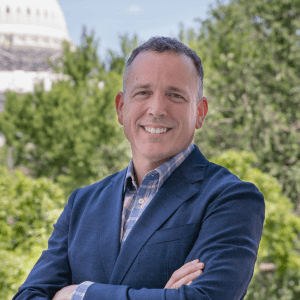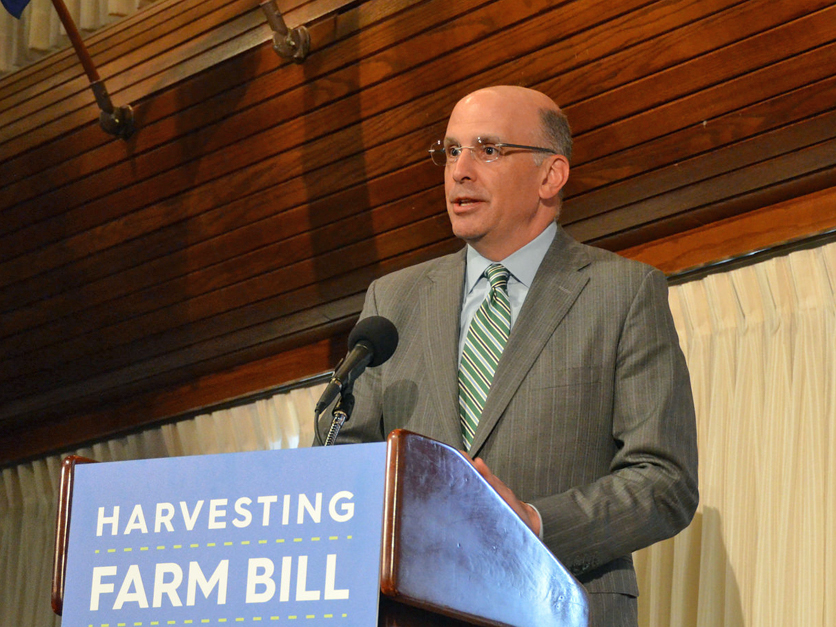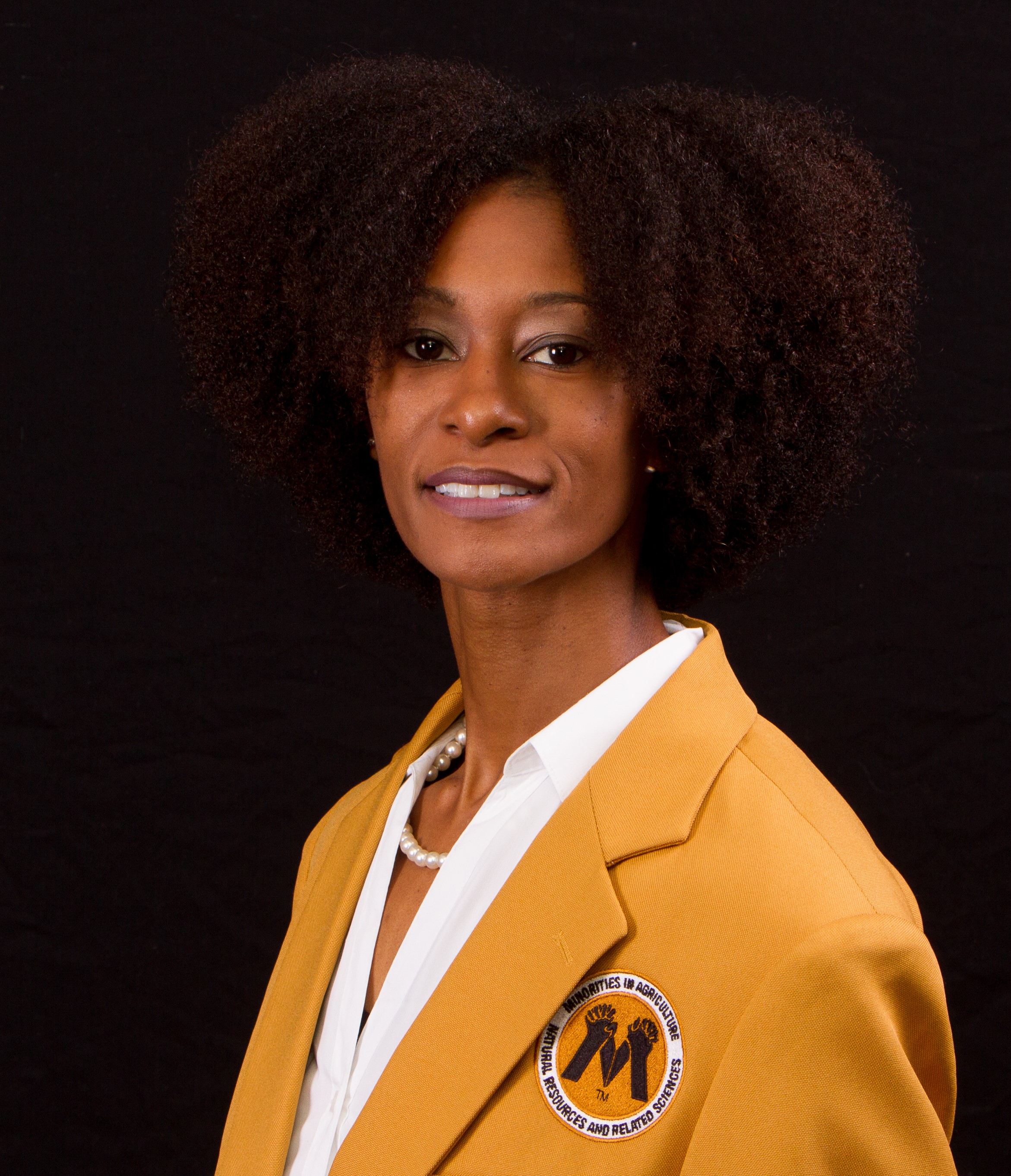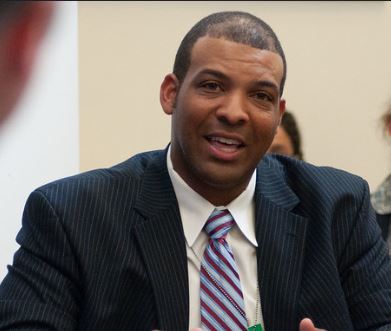As the deputy secretary of agriculture, Krysta Harden was in a unique position to encourage more diversity in agricultural organizations. She knew many farmer leaders personally and they trusted her insights.
At the 2014 Commodity Classic, she delivered a fairly strong message in a private session, telling the almost all-white male audience of farmer leaders that they needed to encourage more diversity in their membership and leadership.
“It was basically a message that, if you want your organization to have a bright future, you need to be more diverse,” recalls Ray Gaesser, the American Soybean Association president at the time.
Gaesser told Agri-Pulse he believes having more diverse sets of views and opinions is good for agriculture but also notes the obvious: ASA’s board, composed of members nominated by the states, is composed of white males with two exceptions: Steph Essick from Iowa and Pam Snelson from Oklahoma.
The soybean association is certainly not alone with its lack of diversity in its leadership ranks.
The majority of U.S. farm organizations have elected white males to lead their organizations, with a few exceptions: Jo Ann Smith was elected to lead the National Cattlemen’s Beef Association in 1985, followed by Jennifer Houston in 2019. Judy Olson was elected president of the National Association of Wheat Growers in 1994. Nicole Berg, the NAWG VP this year, is on track to be the second female president of NAWG next year. The United Soybean Board elected Vanessa Kummer as chair in 2011 and the National Corn Growers Association elected Pam Johnson in 2012.
At the commodity and trade association staff level, more women and minorities have been hired for leadership positions in the last decade. A look across staff directories finds a few white female CEOs and several women who serve in top positions such as chief of staff or the head of government relations.
Within the National Association of State Departments of Agriculture, 13 of the 54 commissioners or secretaries of agriculture are female and six are non-white.
Despite progress on gender diversity, why isn’t agriculture looking more racially diverse? And what should be done about it? The answers are as complicated as the sometimes controversial and emotional dialogues surrounding race relations in the U.S.
Some industry leaders told us that they grew up not knowing any Black, Latino or Asian individuals in their respective geographies. Others said they have tried to recruit a more diverse set of employees and sometimes failed.
“Like many who are engaged in agriculture here in America, I am from a small rural town and really didn’t travel that much while growing up,” noted an Agri-Pulse subscriber who responded to our request for perspectives on this topic. “Our world is formed by those we interact with and for most of us, that is an Anglo-based group of friends and neighbors. While this isn’t bad or wrong it also doesn’t give us the perfect perspective on everything.”
Some groups told Agri-Pulse that they offered jobs to black college graduates, only to be turned down because of the location of the job.
“Geography is an issue,” admits Todd Van Hoose, CEO of the Farm Credit Council. “But it’s an issue that's broader than racial diversity. I’ve heard of organizations who couldn't find a human who was qualified to live and work in an area. When you get to a remote area like some of the places we work, it can be hard to find anybody.”
Yet now, perhaps more than any previous time in their history, agricultural interests are doing a bit more soul searching. In the wake of George Floyd’s death in May and numerous protests that followed, there is a renewed effort by food and agriculture organizations to enact meaningful change and address the questions of race head on. Consider just a small sampling of the actions and statements made since then:
- Deere & Co. pledged $1 million to the National Association for the Advancement of Colored People (NAACP) Empowerment Programs to fight racial inequality. The Moline, Ill., equipment manufacturer made the announcement on social media under a post with a headline of "hatred and discrimination have no place in our society.” Deere also announced it will provide "a 2:1 match on U.S. employee donations to several social justice organizations."
- Midwestern grocer Hy-Vee Inc. will donate $1 million, as well as commit to providing 1 million volunteer hours, to organizations that support racial unity and equality primarily throughout its eight-state region.
- Reactions to George Floyd’s death prompted statements from several agricultural organizations, including the National Farmers Union, the American Farm Bureau Federation, The National Association of State Departments of Agriculture, the National Black Growers Council, the National Young Farmers Coalition, the Farm Credit Council and many others.
“If we stand idly by while our friends and neighbors suffer — as too many of us have done for too long — we are complicit in their suffering. Now is the time to step up, to heal these wounds, to build a just and equal society,” NFU President Rob Larew said in his organization’s statement.
However, Larew said in an interview that, “while statements like these, about racial injustice and the need for diversity and inclusion, can help, the challenge that any organization has is, how do we live that policy?
“A lot of what we need right now is not trying to figure out what the answer is but talk to the folks whose experience this has been,” he said. His organization, which had its first black voting delegate in 1920, featured an all-black panel, focused on black land loss and retention, USDA programs and other issues during its 2020 annual convention. The session was moderated by Karis Gutter, who leads government and industry affairs for Corteva Agriscience.

Rob Larew, National Farmers Union
“There is a reason why ag businesses push as hard as they do to build as diverse and as strong of a workforce as possible, because the opportunities in agribusiness are so strong. We need that same kind of logic and focus also on the farm sector itself,” Larew emphasized.
Wisconsin Farmers Union hosted a training program earlier this year to help members better understand systemic racism and to better understand the experiences of one person versus another. Larew says it’s an effort he’d love to see more of.
“Real change is going to mean more uncomfortable conversations, more listening and more willingness to consider ideas and approaches that we haven't considered before,” he said. “We know that what we've done before, up until this point, hasn’t been successful.”
Jon Doggett, CEO of the National Corn Growers Association, agrees that more needs to be done to “narrow this gulf between white, Christian and rural people and urban, suburban people of different colors and religion.” Even before Floyd was killed, he reached out to Olympic gold medalist Jackie Joyner-Kersee for a conversation about her upbringing and how they might find common ground with farmers on issues like race. The NCGA’s St. Louis headquarters is located about 30 miles from her East St. Louis office.
Doggett says after the COVID-19 pandemic, he’s going to bring corn growers to Joyner-Kersey's JJK center, which among many other things promotes food and nutrition security by teaching urban farming to children. He also hopes to invite inner city kids out to NCGA member farms.
“We need to find ways to have the conversation and build relationships when everyone has a common language,” Doggett said. “And farmers love to have conversations. It won’t be perfect, but we are going to work on it.”
He said he has been making headway on the diversity front with his own staff by hiring more female staff members and would love to have more diverse candidates apply for jobs. “It really bothers me that, out of 60 employees, we have no person of color.” He said he’s committed to doing better with recruitment.
The crop insurance industry has been encouraging black students to get involved in agriculture in a variety of ways, including the National Crop Insurance Services 1890 Scholarship Program, said Laurie Langstraat, vice president for public relations with NCIS. Since 2010, more than two dozen students who attend an 1890 university and are majoring in some discipline of agriculture have been provided scholarships spread over 4 semesters.
Looking for more insights on key agricultural issues?
Subscribe or sign up to receive four weeks of Agri-Pulse for free.
The Farm Credit Council and its members have been trying to support programs and build relationships with black growers and black students for many years, in hopes of improving their recruitment efforts. “It’s a big priority for us,” said Van Hoose, the group’s CEO.
Earlier this year, Farm Credit took the Historically Black Colleges and Universities (HBCU) Challenge, committing to create strategic partnerships with the nation’s 99 HBCUs and acknowledging that they produce “top minority talent” that are “part of your diversity and inclusion efforts.”
“We traveled around on the Hill with them, talking about the needs of those schools and talking about how agriculture intersects there. We are trying to build more connections between individual Farm Credit institutions and individual HBCUs,” said Van Hoose. “What they really want is to develop pipelines of potential hires, and even potential customers — if folks are going into production agriculture. Of course, that’s what we want, too.”

Todd Van Hoose, CEO, Farm Credit Council
Van Hoose told Agri-Pulse the Council this fall will announce a “living stipend program” to support living expenses and encourage more interns in the farm credit institutions from HBCUs.
This “HBCU Launching Leaders Program” is operating as a pilot program this summer.
Farm Credit is also working with a group at the University of Arkansas to analyze the U.S. Census data on production agriculture to put together a more accurate picture of where minorities are located, what their operations look like and what their needs are going to be in the future. As a result, Van Hoose said they hope to identify whether or not there are “things we can do in terms of outreach or are there needs that we could potentially build a program around.” For now, the 2017 Census map shows the strongest concentration of black farmers in southern states.
Several years earlier, Farm Credit partnered with Minorities in Agriculture, Natural Resources and Related Sciences, a non-profit devoted to “foster and promote the agricultural sciences and related fields in a positive manner among ethnic minorities.”
“We’ve been longtime partners and we’re talking to them about how we can enhance that partnership,” said Van Hoose. Other sponsors of MANRRS programs include a who’s who of leading agribusinesses: Land O’Lakes, Bayer, John Deere, BASF, Cargill, Elanco, Merck, Syngenta, Corteva, FMC, Valent and Hormel Foods. USDA’s APHIS, NRCS, ARS and the Forest Service are also sponsors.
In a normal year with no pandemic, the organization hosts leadership institutes, a diversity summit, student competitions and an annual meeting and career fair for college students. The group has over 2,000 members in 38 states, not including their high school program (Junior MANRRS) that they are in the process of building, says Ebony Webber, chief operations officer for MANRRS.
She’s heard from several agribusiness leaders about the challenges they have in recruiting diverse candidates and suggests part of the problem is that companies only look at places where they are used to hiring, mainly major land grant universities.

Ebony Webber, MANNRS
“How are you focused on recruiting diverse candidates if you aren’t going to the historical black colleges and universities, and other minority serving institutions?” she asks.
Another problem for recruiters is that a lot of these students don’t come from a traditional ag background, so “their experience may look a lot different. You may not be able to connect with them in the same way as you can with a student who grew up on a dairy farm, because it’s not valued as such,” she said.
Asked if she’s seen a great deal of progress with hiring diverse candidates over her 17 years with MANRRS, Webber said, “yes and no.”
“There has been progress, but in terms of diversity, it has been largely white women who have benefited. We are seeing progress on gender diversity, which is great. But you’re still not seeing the racial diversity. I’m not seeing women of color obtain those same positions.
“Incidents that have happened over the last two months have put the spotlight on the elephant in the room, which is racial diversity,” Webber said. “That's the most uncomfortable one to address, and the one least talked about when I walk into a lot of companies. I think a lot of people hide behind the term diversity, because they don't want to call out specifically the areas they're looking to hire.”
“I know diversity does mean something different to every organization, but I believe companies are afraid to call out specifically what diversity means to them, and they hide behind this in blanket terms.
“Honestly, I feel like this is why there hasn’t been any progress. There hasn't been any real open dialogue, and this is the first time I feel the focus to address racial inequities will be sustained. I'm hopeful there will be more conversations like you and I are having.”
Webber said that human resources staff in major agricultural companies are now saying they are going to have a “real dialogue” on racial diversity and are pledging to do better. Still, she wishes it would have been more of a proactive effort.
“When it’s a knee-jerk reaction, it kind of makes me feel like I have to hurry up and jump on it because if too much time passes, it’s not going to matter again. People will go back to being comfortable and complacent.”
Webber said she tells her partners that this isn’t an “eight to five type of thing. This is a true case of, you can't fake it ‘till you make it. This is either about who you or who you are not. Diversity, inclusion and equity are all about accepting people for who they are.”
Some black farmers say that they are open to working with their white counterparts in farm organizations and agribusinesses, but need to develop a new level of trust after suffering so much discrimination at the hands of USDA and others in the past.

PJ Haynie III, National Black Growers Council
“The discrimination process that black farmers went through decades ago, didn't only affect that generation. It was genocide for the future generations, because no one wanted to go into the same struggles and walk in the same footsteps,” said Philip J. Haynie III, chairman of the National Black Growers Council, who farms in Virginia and Arkansas.
In 2017, the United States had 48,697 producers who identified as black, either alone or in combination with another race, according to USDA’s NASS. They accounted for 1.4 percent of the country’s 3.4 million producers, and they lived and farmed primarily in southern and mid-Atlantic states.
Growing up and helping his dad farm in Virginia, he was eager to find other black farmers who could share their experiences with him. He says relationships formed in the NBGC made that possible.
Haynie says he’s been in more conversations with companies this year about how to be more inclusive in agriculture than ever before. He tells Agri-Pulse there are several things most agribusinesses could do differently to try to have relationships with black growers.
“They have to be willing to convey to growers they are sincere. They’ve got to put their money where their mouth is and invest in some diversity training for their own employees,” he said.
Interested in more coverage and insights? Receive a free month of Agri-Pulse.
Haynie recalls a NGBC meeting at Monsanto headquarters in 2008 when then-CEO Hugh Grant asked black growers assembled in the room if they were taking advantage of their zero-percent seed financing programs. A black grower who farmed 8,000 acres in Texas said he didn’t know such a program existed and was borrowing a couple of million dollars, paying interest at the bank instead. Grant was livid, Haynie recalls.
That’s one example of the economic disparities that haunts many black farmers, Haynie said.
“In order to overcome these barriers we must find methods to deliver information to all farmers and ranchers equally. Companies must be socially responsible and ensure their inclusion and diversity protocols are implemented on a corporate level and throughout the wholesale and retail networks that represent them,” he added.
“A lot of companies have programs that are supposed to come down from the top, but it ends up only the white neighbors learn about them,” Haynie said. “That’s the economic disparity that still haunts many black farmers. That’s the knee on our neck.”
For more news, go to www.Agri-Pulse.com.


